The Wonderful World of Guinea Pigs
Guinea pigs, also known as cavies, are charming rodents that have captivated humans for centuries. Often perceived as easy pets, their rich history, complex social lives, and surprising biological details reveal a far more nuanced creature. This guide explores everything from their wild origins to their place in modern culture, providing a comprehensive look at these delightful animals.
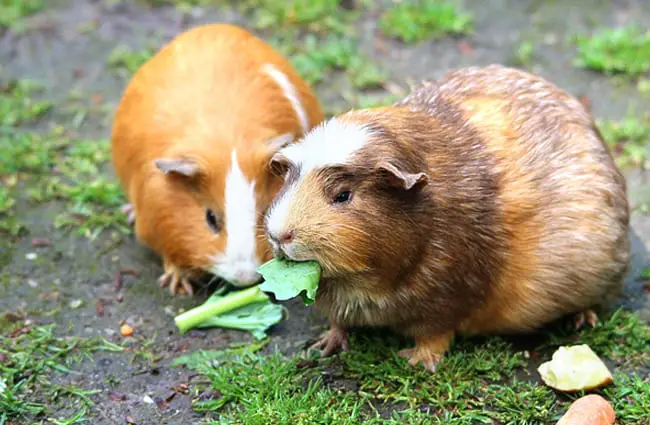
Origins and Evolution
Despite the name, guinea pigs are neither from Guinea nor are they pigs. Their ancestry traces back to the wild cavies of the Andes Mountains in South America, specifically present-day Peru, Bolivia, Ecuador, and Colombia. Archaeological evidence suggests that guinea pigs were first domesticated as early as 5000 BC, initially as a source of food rather than pets. For pre‑Columbian cultures, they were a vital protein source and even held ceremonial significance. Spanish and English explorers brought these animals to Europe in the 16th century, where they quickly transitioned from livestock to popular pets and subjects of scientific study.
Habitat and Distribution
In the wild, guinea pigs inhabit grasslands, scrublands, and the edges of forests. They prefer areas with dense vegetation that provide cover from predators. While their natural range is limited to the Andes region, domesticated guinea pigs are now found worldwide as pets. Spotting a wild guinea pig requires a keen eye and venturing into their native habitat. They construct burrows for shelter and to raise young, often in colonies. Their presence indicates a healthy grassland ecosystem.
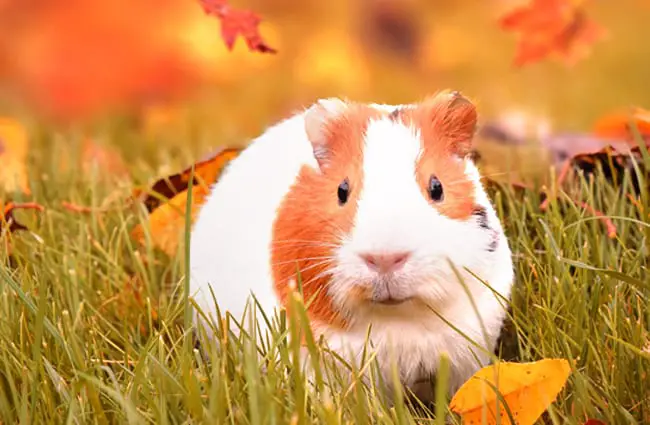
Diet and Nutritional Needs
Guinea pigs are herbivores, and a constant supply of vegetation is crucial to their health. In the wild, their diet consists of grasses, leaves, stems, and occasionally roots. They are unique among rodents because they need vitamin C; they cannot synthesize it internally. This vital nutrient must be obtained through their food. A lack of vitamin C leads to scurvy, a debilitating and potentially fatal condition. As pets, their diet should include high‑quality guinea pig pellets, fresh hay (Timothy hay is ideal), and a daily serving of vitamin C‑rich vegetables such as bell peppers, kale, and parsley. Fruits should be offered in moderation as treats because of their sugar content.
Social Behavior and Communication
Guinea pigs are highly social animals that thrive in the company of others. In the wild, they live in small colonies with complex social hierarchies. They communicate through a variety of vocalizations, including wheeking (a high‑pitched squeal), chutting (a content purring sound), and rumbling (used during courtship or to assert dominance). Body language also plays a significant role, with postures, ear positions, and tail movements conveying a range of emotions and intentions. Providing sufficient social interaction is crucial for their well‑being in captivity, so keeping them in pairs or small groups is recommended.
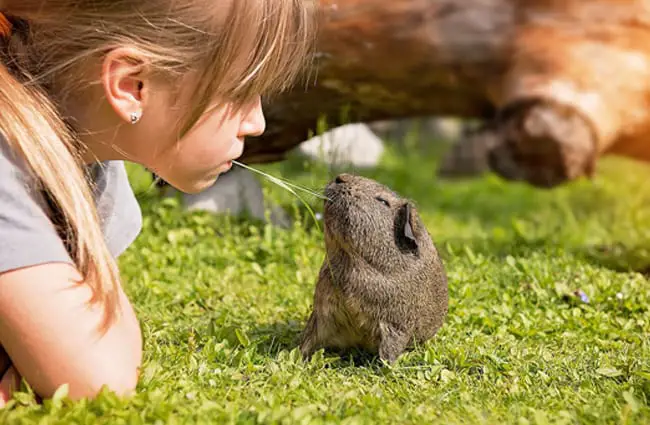
Mating and Reproduction
Guinea pigs reach sexual maturity at a relatively young age, around 4 to 8 months. Their gestation period is approximately 59 to 72 days, resulting in litters of 1 to 8 pups. Pups are born precocial, meaning they are relatively well‑developed at birth, with open eyes and a full coat of fur. They can walk and feed shortly after birth. The mother provides extensive care, nursing the young for several weeks, and males often participate in pup rearing as well. If breeding is not desired, separating males and females is important because guinea pigs breed prolifically.
Ecological Role and Interactions
In their natural habitat, guinea pigs help disperse seeds and serve as a food source for predators such as foxes, hawks, and snakes. They also contribute to nutrient cycling through their foraging and waste products. Grazing helps maintain the health of grasslands. As domesticated animals, their ecological impact is minimal, but responsible pet ownership is vital to prevent escapes and potential disruptions to local ecosystems. Their primary interaction is now with humans, and understanding their needs is paramount.
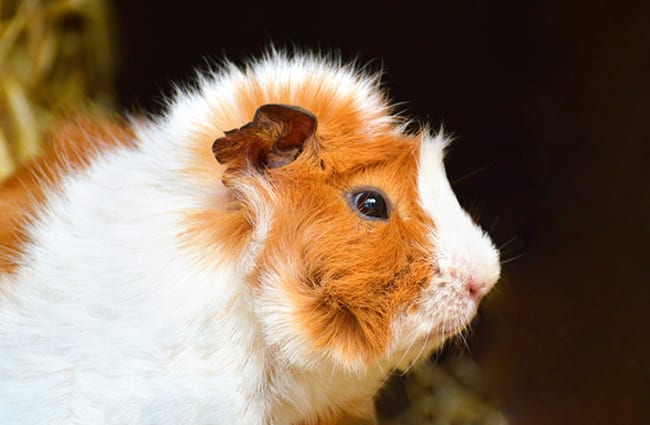
Guinea Pigs and Humans
Throughout history, guinea pigs have held a unique position in human culture. Beyond their initial use as a food source, they became popular pets in Europe and were often associated with royalty and the upper classes. In the 19th and 20th centuries, they became invaluable subjects for scientific research, particularly in the fields of audiology, immunology, and cardiology. Their physiological similarities to humans make them valuable models for studying various diseases. Today, they remain beloved pets and are also used in educational settings to teach children about animal care and responsibility.
Caring for Guinea Pigs in Captivity (For Zookeepers & Owners)
Providing proper care for guinea pigs in captivity requires attention to several key aspects. Their enclosure should be spacious, well‑ventilated, and lined with absorbent bedding. Regular cleaning is essential to maintain hygiene and prevent health problems. A constant supply of fresh water and appropriate food is crucial. Enrichment activities—such as toys, tunnels, and chewable objects—should be provided to stimulate their minds and prevent boredom. Routine veterinary checkups are important for early detection and treatment of any health issues. Avoid overcrowding, exposure to extreme temperatures, and sudden changes in their environment. Pay close attention to their behavior and promptly address any signs of illness or distress. A healthy guinea pig is an active, alert, and social animal.
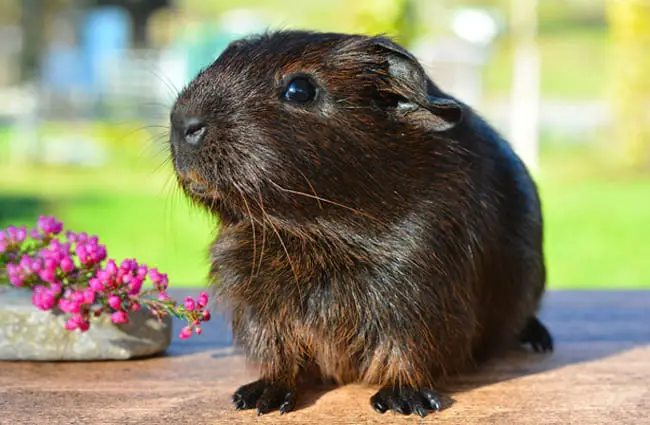
Fun Facts About Guinea Pigs
- Guinea pigs don’t actually whistle! The wheeking sound they make is a high‑pitched squeal.
- They have four toes on their front feet and three on their hind feet.
- Guinea pigs have continuously growing teeth, which means they need to chew on things to keep them trimmed.
- They can jump! Though not very high, they can sometimes lift themselves off the ground.
- Different breeds of guinea pigs come in a variety of colors and coat types, including smooth, rough, and long‑hair.
- They are crepuscular, meaning they are most active during dawn and dusk.
- Guinea pigs are known for popcorning, a joyful behavior where they jump straight up in the air and wiggle their bodies.
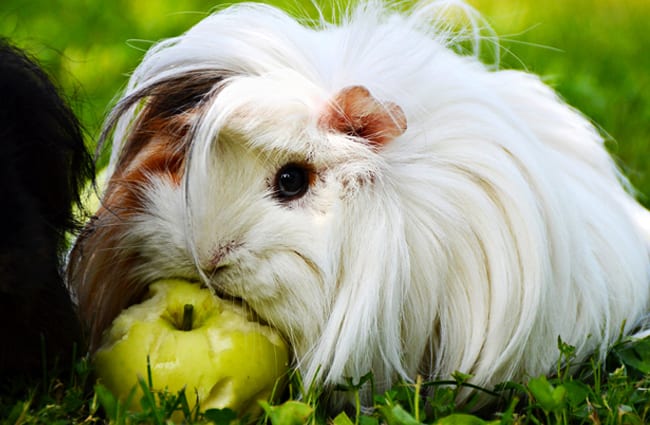
Encountering a Wild Guinea Pig
If you encounter a guinea pig in the wild—particularly in the Andes region—observe from a distance. Avoid approaching or attempting to handle the animal, as this could cause stress. Do not offer food, because it can disrupt their natural foraging behavior. If the animal appears injured or sick, contact local wildlife authorities for assistance. Respect their habitat and avoid disturbing their surroundings.
Guinea pigs are truly fascinating creatures that deserve our admiration and respect. From their ancient origins to their modern-day roles as pets and research subjects, they continue to captivate and inspire. By understanding their biology, behavior, and needs, we can ensure their well‑being and appreciate their unique contribution to the natural world.

![Red Angus Closeup of a beautiful Red Angus cowPhoto by: U.S. Department of Agriculture [pubic domain]https://creativecommons.org/licenses/by/2.0/](https://animals.net/wp-content/uploads/2020/03/Red-Angus-4-238x178.jpg)




![Red Angus Closeup of a beautiful Red Angus cowPhoto by: U.S. Department of Agriculture [pubic domain]https://creativecommons.org/licenses/by/2.0/](https://animals.net/wp-content/uploads/2020/03/Red-Angus-4-100x75.jpg)

